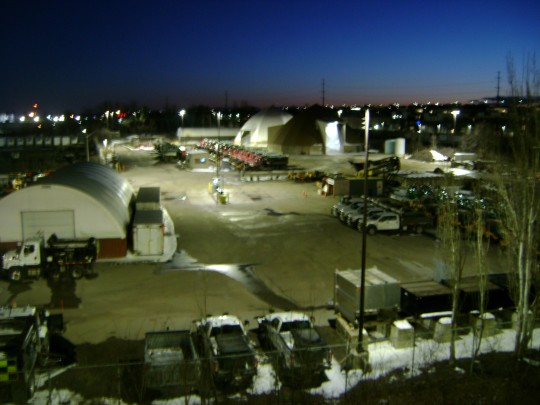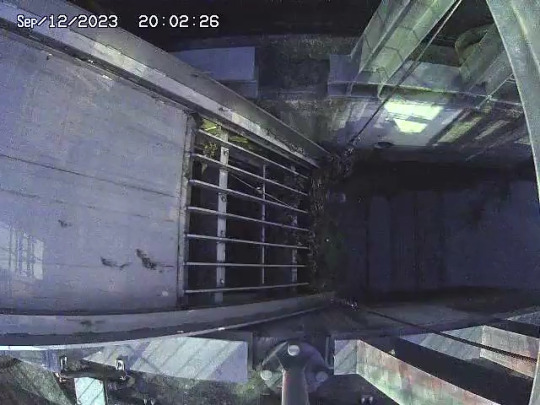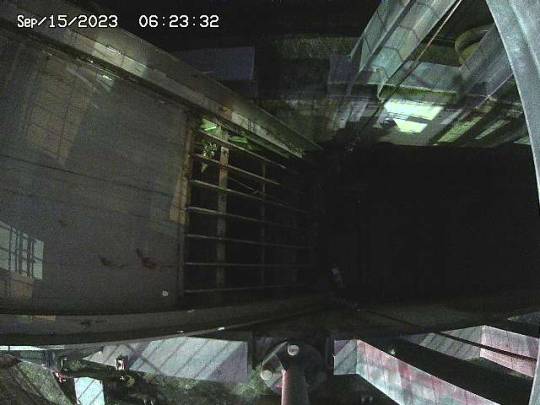#Industrial Cameras
Explore tagged Tumblr posts
Text
VCM Autofocus vs. Manual Focus: Which Is Better for My Application?

The selection between VCM autofocus and manual focus is more than just a personal preference in the rapidly changing field of imaging; it has a direct impact on speed, accuracy, and clarity for a range of applications. Focus technology affects the quality and consistency of your results, whether you're working on consumer electronics, medical imaging, or industrial inspection. However, which one best meets your unique requirements? Would manual focus provide more control for your project, or are VCM actuators the better option?
We'll examine both VCM autofocus and manual focus in detail in this article to assist you in selecting the technology that best suits your needs. From describing how each choice works to weighing the real-world benefits and drawbacks, we'll offer concise insights to assist in resolving a frequent issue. point for anyone invested in high-quality imaging.
What Is a VCM Actuator?
A voice coil motor (VCM) actuator is a type of electronic motor used to adjust a camera lens’s position to achieve a precise focus. This type of actuator operates using electromagnetic force, which drives a small magnet and coil mechanism within the camera’s lens. VCM actuators enable autofocus by moving the lens quickly and precisely in response to image capture requirements, ensuring that the camera remains focused on its subject without manual adjustments.
VCM actuators are essential to modern autofocus technology, offering significant advantages in speed and accuracy, especially for applications requiring rapid adjustments, such as industrial automation, medical devices, and high-speed photography. Because they operate electronically, VCM actuators reduce the need for human intervention, delivering consistent, accurate focus automatically.
Manual Focus: When Control Is Key
Manual focus, by contrast, allows users to adjust a camera’s lens manually to bring the subject into focus. This method is particularly valuable for applications that require a high level of precision and control over the focus, such as specialized scientific imaging or creative photography. With manual focus, users can fine-tune their focal adjustments to fit exacting standards or artistic preferences.
Although manual focus offers the flexibility of direct user control, it can be challenging in fast-paced environments where quick focus adjustments are essential. Industrial and medical imaging, for instance, often demand rapid, precise focus that manual adjustments can’t always deliver, especially when consistency across multiple images is required.
Key Benefits of VCM Autofocus for Industrial and Medical Applications
Let’s dive into the practical reasons VCM autofocus technology is ideal for applications requiring speed, accuracy, and automation.
Speed and Efficiency: VCM actuators enable rapid autofocus adjustments, allowing devices to maintain consistent focus on moving subjects or changing focal planes. This is crucial in applications like automated quality control, where products move quickly through an assembly line and require instant focus.
Improved Accuracy: VCM autofocus systems offer precise adjustments down to a micron level, ideal for applications where image clarity and detail are essential. Medical devices, such as microscopes or diagnostic cameras, benefit from this high precision, as even minor focus inaccuracies can impact diagnoses or research outcomes.
Reduced Human Intervention: Automation with VCM actuators decreases reliance on manual adjustments, enhancing productivity in environments where skilled labor is either limited or too costly. Industrial settings, for instance, can automate focus without an operator, reducing errors and ensuring consistent performance.
Low Power Consumption: VCM actuators are designed to be energy-efficient, which is especially beneficial for battery-powered devices, such as handheld scanners or portable medical cameras. This feature makes VCM autofocus well-suited for applications where device longevity and portability are essential.
Compact and Lightweight: VCM actuators are compact, allowing manufacturers to create smaller, lighter imaging devices. This is particularly beneficial for consumer electronics like smartphones or wearable cameras, as well as medical devices that require portability.
Limitations of VCM Autofocus
Despite its many advantages, VCM autofocus has certain limitations:
Initial Cost: Integrating a VCM actuator into an imaging device can raise the initial manufacturing cost, making it a larger investment for companies compared to simpler manual focus systems.
Complexity of Integration: VCM actuators require precise calibration and may involve complex programming to work seamlessly with imaging sensors, adding time and complexity to product development.
Sensitivity to External Factors: VCM autofocus can sometimes struggle in environments with extreme temperatures or vibrations, which can affect the focus mechanism's precision.
Situations Where Manual Focus Excels
There are specific scenarios where manual focus still outshines VCM autofocus. Here’s where manual focus may be the better option:
Creative and Studio Photography: Professional photographers who want to control every detail of their shots often prefer manual focus. It allows them to set the exact focus point based on artistic vision rather than relying on an automatic system.
Specialized Scientific Research: When a precise, unchanging focal plane is essential, such as in high-magnification scientific imaging, manual focus offers the fixed stability needed for data consistency.
Low-Light Environments: VCM autofocus can struggle in low-light conditions where image data may not be sufficient for automatic adjustments. In these cases, manual focus can help users adjust based on visual cues rather than relying on autofocus technology.
Choosing the Right Focus Technology for Your Application
The choice between VCM autofocus and manual focus ultimately depends on your application’s specific needs. Here’s a quick guide to help you decide:
For High-Speed, High-Volume Environments: If your application involves fast-moving objects or high-volume processing, such as in manufacturing, VCM autofocus is likely the best choice for its speed and automation.
For High-Precision, Specialized Imaging: If your application requires exacting control over focus without real-time adjustments, such as laboratory work or creative photography, manual focus offers the level of detail and user control you’ll need.
For Portable or Battery-Operated Devices: In cases where battery life and compact size are essential, such as in medical devices or wearable cameras, VCM autofocus provides a balance of performance and energy efficiency that’s hard to achieve with manual focus.
VCM Autofocus in Consumer Electronics
VCM autofocus is becoming increasingly popular in consumer electronics, from smartphones to drones. With smartphone photography, for example, users benefit from instant focus adjustments that allow them to capture high-quality images in various lighting and environmental conditions. The VCM actuator’s rapid focus response makes capturing spontaneous moments possible without sacrificing image quality.
For drone cameras, where real-time image clarity is essential for navigation or capturing aerial shots, VCM autofocus ensures that images stay sharp even when the drone is in motion. This technology also adds value to wearable cameras, allowing hands-free operation without compromising on image quality.
Understanding your application's unique requirements
One of the primary pain points for businesses and developers is determining which focus technology will offer the most value for their application. The process involves evaluating factors such as required image clarity, budget constraints, and operational environment. In many cases, VCM actuators provide the speed, consistency, and precision required for modern, high-performance applications, while manual focus offers an option for tasks demanding more hands-on control.
Final Takeaway: Making the Right Choice for Your Needs
Choosing between VCM autofocus and manual focus isn’t just about comparing features—it’s about finding the right tool for your job. By identifying your application’s unique requirements and understanding how each technology addresses key pain points, you can make a choice that enhances performance, saves time, and ultimately delivers better results.
For applications where speed, accuracy, and automation are critical, VCM autofocus powered by a reliable VCM actuator could be the solution that elevates your device’s performance. On the other hand, if direct control and customization are essential to your workflow, manual focus remains a trusted choice that offers unmatched flexibility.
Ready to integrate cutting-edge focus technology into your project? Discover our range of VCM actuators and see how they can help your imaging system achieve unparalleled clarity and efficiency. Visit our website to explore the full lineup of options and find the right actuator for your application. Don't compromise on focus—take the next step to precision today!
0 notes
Text

Southwest Oregon, a favorite old house of mine.
#photography#southern gothic#americana#pacific northwest#rural gothic#rural decay#digital camera#fog#digital photography#western#abandoned homes#abandoned house#abandoned buildings#abandoned#digicam#nostalgiacore#nostalgia#dark naturalism#decay#decay of angels#industrial decay#haunted#haunted house
2K notes
·
View notes
Text


#s0larize#my pic#digicam#digital camera#night photography#factory#industrial aesthetic#grunge#grunge aesthetic#weirdcore#nostalgiacore#grungecore#midwest gothic#ontario#small town gothic#fog aesthetic#1k
2K notes
·
View notes
Text

(x)
#cybergoth#cyber dreads#alt#goth#gothic#2000s#webcore#web finds#nostalgia#mall goth#old web#old internet#early web#early internet#digital camera#goth goth#goth fashion#industrial goth#00s#flickr
479 notes
·
View notes
Text

Olympus: O-Product 35mm Camera (1988) Designed By: Naoki Sakai
3K notes
·
View notes
Text











Pages from trying to keep a little sketchbook-scrapbook type thing going for two weeks lol. I gave myself specific rules in hopes they might all end up more cohesive/consistent seeming, but alas, scribbly chaos reigns, it seems
#sketchbook#scrapbook#Actually I feel like these are kind of incomprehensible in photo form like.. In person holding the book its easy to look at#but as images on this scale I feel like there's so much tiny little text and small scribles and stuff you'd have to 'right click > open#image in new browser tab > zoom in' just to actually really see the thing. which for 7 images is excessive lol.. so. probably not the best#medium for sharing really but. I suppose I thought they might look cooler lined up next to each other. The whole part of using a#limited color palette is so that maybe they kind of seem to have more consistent color schemes or something throughout. but I dont#know if they look all that 'related' or not. I think these types of challenges I have always sucked at because I am a being of clutter and#excess. I can't just do like one little simple nice looking design and have that Crisp Neat calligraphy with evenhanded perfect lines#and perfect symmetical composition and etc. etc. Like some poeple post very aesthetically clean and cohesive looking sketch#pages or something but I simply cannot hold back the brain impulse to add more. more. more. Fill every single blank space with color#or a little drawing or a sticker or something. I take away 500 things and there are still a million there. Even when I thik I'm being#'simplistic' I'm still usually being 2x more complicated and cluttered than the standard or whatever lol. I guess thats clear from my#outfits/costumes though too. Like whatever that saying is from that person about something like 'before you leave the house take off one#more accessory. you dont need it' for me is like.. 'before you leave the house. add 10 more accessories. and 6 more layers. and another'#AAANyway. I wonder if also maybe some people would try to plan theirs in a way to look good or something or like.. plot things on the page#before placing them. I did sometimes have a theme for a day kind of (like day 10 I ended up finding a few gold and green things and then#was like.. hey... what if I looked for a few other things and only used these colors today') but aside from that I was just slapping down#stickers randomly and working around them to fill the page. Maybe a lot of neat minimalistic asthetic design is about planning and#having a Vision set ahead of time. instead of just complete random whatever. doodling whilst watching youtube videos or eating lunch. It's#a miracle actually I've managed to not spill any food on the book the whole time. anyway.. I do wish the highlighter really showed up. the#scanner kind of makes the colors look VERY different to irl. But also it got much clearer images than just camera pictures of pages. alas..#..Still oddly enjoy the phrase 'Salisbury Steak gently kissed with industrial pollutants'#probably my favorite section of 'gluing random papers and things onto the page' lol#Also I wonder if it's super obvious that I literally never ever use references when I draw (save for the few freakish looking youtube#face sketches) since everyone is always in the same positions and looking very similar ghhb. This could have been a good opportunity to#work on not solely drawing from my mind and try to do more Dynamic Experimental scribbles. NO. Same exact eye for the 90th time#be upon ye. But I guess it was meant to be casual 'daily doodles'. True 'practice' would make it seem too effortful like a full project. hm#(lol the one decimated pencil in the set... never hand me a writing utensil. i will passively destroy it somehow. shaving the sides of a#pencil off with a knife or snapping a pen in half as a nervous fidget without even realizing i've done it. sorry to the drawing implements)
78 notes
·
View notes
Text

Brandenburg, 2024
Photo: Roland Helbig
#black and white photography#industrial culture#industrial#photographers on tumblr#original photographers#point and shoot camera#ricohgriii
121 notes
·
View notes
Note
Yk, I hate that adaptations keep making Peter a high schooler, and not just because it means he never evolves, but because the adaptations now also include wider Marvel, whitch usually (thanks to the MCU) is at the modern day stage with legacy characters and new age teen heroes, meaning that Peter is taking up Miles' spot and you can really tell when they put him next to someone like Kamala Khan or Sam Alexander who are Miles' pals. Tho Peter taking Miles' stuff is just a modern issue overall, just look at MCU whitch just stole and re-skinned Miles' personality, characters, story-beats, even the costume to an extent and then made it worse.
agree 👏
#sci speaks#sci. release the script doctor you did where it actually was miles in the mcu and peter parker is a grown ass man.#it was funny. peter was a really bad intern at stark industries#who stole stark tech on the sly.#and of course. tony catches wind of this because he has cameras everywhere and. those cameras happened to also catch.#him sneaking out of work as spider-man.#and tony ropes him into civil war or whatever because otherwise he could Literally press charges.#and peter's :((((((((#begrudgingly joins tony's side.#in the post credit we see that he's been gathering stark tech to build miles morales some very neato webshooters.#and voil.a. miles is the star of homecoming and. peter is the mentor figure that encourages miles to start small.#miles: but YOU teamed up with the avengers a#peter: do as i SAY not as i DO.#sighs. so little would have to change.#but no more child soldiers and no more over exposure of tony stark. fantastic. superb.#also showing a slightly sneakier peter parker who isn't exactly entirely morally upstanding.#steals from billionares while they're not looking to serve the people who need it.#robin hood figure !! sexy. would falll to my knees for a peter parker like that. would be my favourite on screen peter ever.#and it puts him more in an interesting spot with the villains in the movies too.#if we still go with the route of all the villains being affiliated with stark tech and stealing / using stark tech#then peter is like. in a more complex role in the story. he stole stark tech too. is he better than the criminals?#he uses it for good. he thinks. but that's his judgement.#just i think it would be neat. all the “you're just like me” rhetoric falls so flat in those movies.#but what if it hit different.#but that would be if marvel had the courage to make a complex spider-man movie#where peter parker is allowed to make morally complex decisions asides for “uhh. stupid kid makes stupid mistakes”#sci talks movies
107 notes
·
View notes
Text







The Factory, photography collection by David Lynch.
#art inspo#camera studies#david lynch#i wish this book weren’t $600 now#pulldroning#feel the pull#the sigh#industrial#photography#the great dark#david lynch my lord and savior
25 notes
·
View notes
Text
Just thinking about how awards shows are generally tedious affairs even under the best of circumstances, and David clearly was doing his best to get through reading a bunch of pablum on the autocue (teleprompter) unscathed, and the very first thing he does to retain some semblance of sanity and hold onto a piece of his real self in the midst of playing the part of David Tennant, Award Show Host is to take part in a bit/go right up to his emotional support pet, a.k.a., Michael. While holding an actual pet, no less...

(Also that dog is officially their child and this entire thing gave me British Birdcage vibes with David as Albert and Michael as Armand and I will not be taking arguments at this time...)
#david tennant#soft scottish hipster gigolo#michael sheen#welsh seduction machine#BAFTAs 2024#very very married#technically it's not RPF if they ship themselves#also the camera repeatedly cutting to Michael when he was nominated for nothing and presenting nothing#i am convinced the entirety of the UK acting industry Knows#saying a lot by saying very little#amazing#they are perfect together your honor#i don't know if i believe in fate but i believe in them#ineffable lovers#discourse
93 notes
·
View notes
Text
Can Global Shutter Cameras Work in Extreme Conditions?

For vital businesses like aerospace, manufacturing, military, and even extreme sports, taking high-quality photos in difficult conditions is more than just a technological need. However, how can you take accurate measurements or record swiftly moving things in challenging or unstable environments? Presenting the global shutter camera, a device that removes motion blur while capturing fast-moving activity. However, it is yet unclear if global shutter cameras can function effectively in the presence of dust, severe vibrations, variable light, and extremely high temperatures.
This blog will dive into how global shutter cameras are being developed to meet the extreme demands of various industries. From temperature resilience to shockproof design, we’ll explore the pain points customers face when selecting cameras for extreme environments and how global shutter cameras meet these unique needs. Read on to learn if global shutter cameras are the right fit for your business operations or projects that push the boundaries of technology.
What is a Global Shutter Camera?
Before we dive into extreme conditions, let’s quickly clarify what sets a global shutter camera apart from other types of cameras. Unlike a rolling shutter camera, which scans the image from top to bottom, a global shutter captures the entire scene at once. This eliminates the “rolling shutter effect” that distorts fast-moving subjects, producing clear, distortion-free images—even when things are moving quickly. This capability is essential for environments where split-second timing and precise imaging are crucial.
In applications where speed and accuracy are paramount, the global shutter is a standout technology. But can it withstand the additional challenges posed by extreme environments?
Challenges of Using Cameras in Extreme Conditions
When deploying cameras in harsh environments, companies face a set of challenges that can disrupt image quality, durability, and the long-term reliability of their equipment. Here’s a look at some key obstacles:
Extreme Temperatures High or low temperatures can impact a camera’s internal components, such as sensors and circuitry. In many extreme environments, like outer space or underground mining, temperatures can range from far below freezing to well over 100°C (212°F).
High-Vibration Settings Vibrations from heavy machinery or vehicles can destabilize cameras, resulting in motion blur, reduced focus, or, worse, equipment failure.
Dust and debris Dust, sand, and other fine particles can infiltrate camera housings, damaging delicate internal components. Industries like construction and mining face these issues daily.
Fluctuating Lighting Conditions Extreme lighting conditions—like sudden changes between bright sunlight and darkness—are common in environments such as deep-sea exploration or aerospace, making clear image capture a challenge.
Moisture and Humidity Water, humidity, or sudden exposure to moisture can cause condensation within cameras, leading to short circuits and other malfunctions.
How Global Shutter Cameras Address Extreme Conditions
Let’s examine how advancements in global shutter camera technology make these cameras a viable solution for extreme environments.
1. Temperature Resilience with Advanced Sensor Design
Global shutter cameras designed for extreme conditions often feature sensors and materials that can withstand a broad temperature range. For instance, cameras used in aerospace or defense sectors are engineered with specialized coatings and temperature-resistant materials that protect the camera from the inside out.
Customer Pain Point Solved: Many customers need cameras that maintain performance despite temperature fluctuations, ensuring that image quality remains consistent and equipment does not fail under thermal stress.
2. vibration-resistant mounts and housing
Cameras installed in high-vibration environments require a stable structure to prevent internal displacement or sensor shifting. Global shutter cameras can be encased in vibration-resistant mounts and housing, providing protection from shock and ensuring the camera remains securely fixed.
Customer Pain Point Solved: Customers in industries like manufacturing or mining require cameras that don’t lose focus or capture blurry images due to vibrations. Global shutter cameras offer the reliable performance necessary to avoid costly retakes or downtime.
3. Dustproof and waterproof casing
Global shutter cameras built for rugged use cases come equipped with dustproof and waterproof housing to keep out particles and moisture. Many high-end models are rated IP67 or higher, making them suitable for environments where dust, dirt, or water exposure is a daily concern.
Customer Pain Point Solved: Camera failure due to dust or water ingress can disrupt work in critical environments. With dustproof and waterproof designs, global shutter cameras provide the resilience customers need to capture essential images without maintenance interruptions.
4. HDR and Auto-Exposure Technology for Lighting Changes
A global shutter camera’s sensor can be paired with High Dynamic Range (HDR) and auto-exposure features, enabling it to adjust automatically to changing light conditions. In areas where lighting fluctuates—like outdoor sites or underwater expeditions—this feature ensures that images retain clarity and detail.
Customer Pain Point Solved: Sudden changes in lighting can ruin image quality, but with HDR and auto-exposure, global shutter cameras adapt on the fly, delivering consistent results regardless of light conditions.
5. Anti-Condensation Coating for High-Humidity Areas
For operations in high-humidity or underwater environments, global shutter cameras can be outfitted with anti-condensation coatings and sealed enclosures. This prevents fogging, a frequent issue for standard cameras, and ensures the camera remains fully functional.
Customer Pain Point Solved: Customers often need a solution to prevent fogging or moisture damage in humid or wet environments. Anti-condensation features allow these cameras to maintain visibility and performance, enhancing reliability in challenging conditions.
Industry-Specific Applications of Global Shutter Cameras in Extreme Environments
Aerospace and Defense
In aerospace, cameras may encounter intense vibrations and need to capture precise images of fast-moving objects. Global shutter cameras help reduce motion distortion while their rugged design withstands high temperatures and vibrations typical of aerial conditions.
Mining and Construction
In construction sites or mining operations, cameras are exposed to dust, vibrations, and fluctuating lighting conditions. Global shutter cameras, with their dustproof design and ability to capture moving objects without blur, are ideal for monitoring or scanning in these environments.
Underwater Exploration
Global shutter cameras are being increasingly used in underwater exploration, where lighting, pressure, and temperature vary significantly. With anti-condensation design and waterproof housing, these cameras capture high-quality images in marine research and underwater construction.
Manufacturing and Inspection
Manufacturing plants often involve heavy machinery that produces vibrations. Global shutter cameras provide clear, undistorted images for quality control and inspection, ensuring operational efficiency and product consistency.
Choosing the Right Global Shutter Camera for Your Extreme Environment Needs
While the technology is impressive, not all global shutter cameras are created equal. Here are a few tips to help you choose the right model for your needs:
Check Temperature Range: Make sure the camera is rated for the temperature extremes you’ll encounter.
Vibration-Resistance: Opt for a camera with reinforced mounts if you’ll be in a high-vibration environment.
Waterproof and Dustproof Ratings: Look for IP67 or IP68 ratings to ensure adequate protection against dust and moisture.
HDR Compatibility: If lighting fluctuations are an issue, HDR or auto-exposure features can improve image consistency.
Moisture Protection: Anti-condensation or sealed enclosures will prevent moisture buildup in high-humidity settings.
Invest in Reliability and Performance: Choose a Global Shutter Camera Today
In extreme conditions, standard cameras simply don’t make the cut. Global shutter cameras have become an essential solution for industries that require consistent, high-quality images in challenging environments. They’ve evolved to handle the most rigorous requirements, from high temperatures to dust-filled air and fluctuating light. By choosing a global shutter camera, you’re investing in reliable technology designed to work where others fail.
Ready to find the right global shutter camera for your needs? Explore our collection of ruggedized, high-performance global shutter cameras that are built for extreme environments. Discover more about our camera solutions or reach out to our team for personalized recommendations!
0 notes
Text










#gummo#art#photography#film#cinema#experimental#photooftheday#cult#movie#industrial#woman#chloe sevigny#harmony korine#polaroid#film photography#photographer#film camera
43 notes
·
View notes
Text


#s0larize#my pic#digicam#digital camera#digital photography#grunge#grunge aesthetic#parking garage#grungecore#memorycore#nostalgiacore#night aesthetic#midwest gothic#liminalcore#liminal#hometowncore#industrial aesthetic
167 notes
·
View notes
Text

(x)
#nine inch nails#trent reznor#industrial#dark alternative#2000s#alt#webcore#web finds#nostalgia#industrial music#electronic#dark electronic#dark industrial#00s#00s nostalgia#early internet#old web#early web#old internet#digital camera#concert merchandise#industrial rock
378 notes
·
View notes
Text


HIROSHIMA, JAPAN.
191 notes
·
View notes

